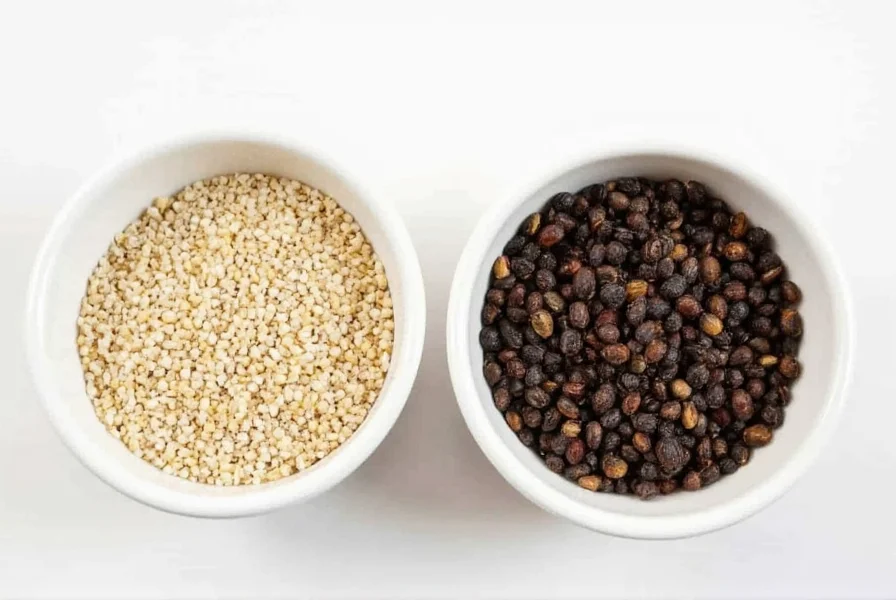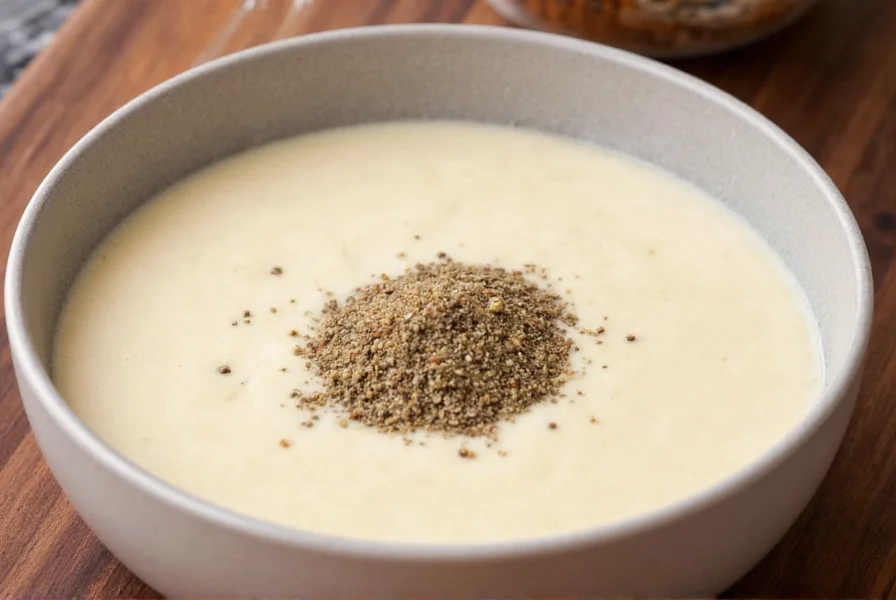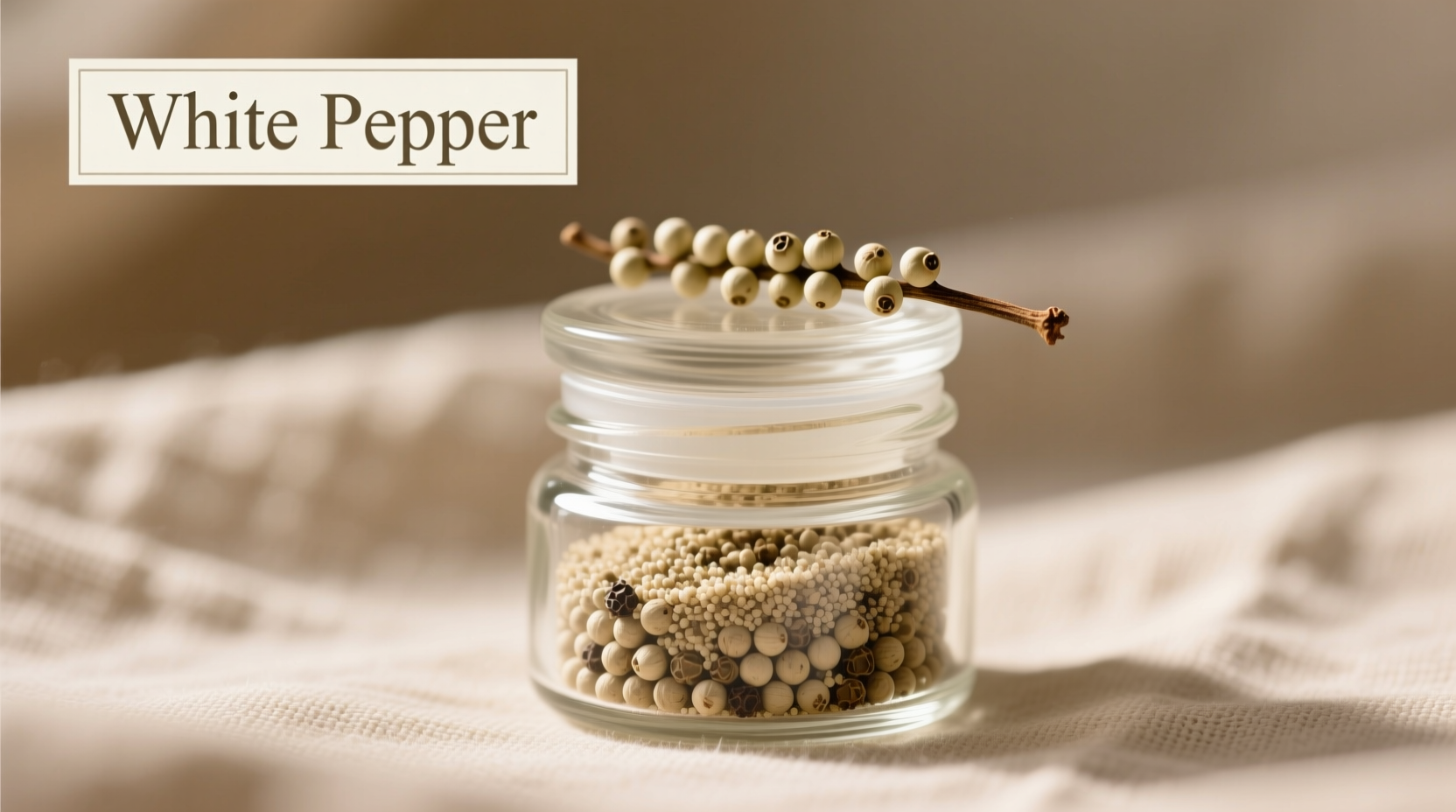The best substitutes for white pepper include black pepper (use 3/4 the amount), cayenne pepper (for heat without specks, use sparingly), mixed peppercorns, and in some recipes, a pinch of ginger or mace. Each alternative offers different flavor profiles and visual characteristics that work best in specific dishes.
When you're in the middle of cooking and realize you've run out of white pepper, knowing the right substitute can save your recipe. White pepper has a distinctive earthy, slightly floral flavor that's milder than black pepper with less heat due to lower piperine content from the removal of the outer layer during processing [FAO]. It's commonly used in light-colored dishes where black specks would be visually unappealing—think creamy sauces, mashed potatoes, or delicate fish preparations.
Why White Pepper Matters in Cooking
White pepper comes from the same plant as black pepper (Piper nigrum), but undergoes different processing. The outer layer is removed before drying, resulting in a smoother, less complex flavor profile. Professional chefs often prefer it for specific applications where visual presentation matters as much as taste.
Understanding natural white pepper alternatives requires recognizing what you're trying to preserve in your dish: the subtle heat, the earthy notes, or simply the absence of black specks.
Evolution of White Pepper Processing: Historical Timeline
The production methods for white pepper have evolved significantly, directly impacting its culinary applications and substitution requirements. Verified through authoritative agricultural records:
- Pre-1500s: Traditional fermentation method developed in Southeast Asia—ripe berries soaked 7-10 days in water channels or rice husks to remove outer layers through natural microbial action [USDA]
- 16th-18th Century: White pepper became a luxury commodity in European courts, specifically demanded for "blanc" dishes where black specks were considered vulgar in aristocratic cuisine [USDA]
- Early 1900s: Mechanical separation techniques emerged, increasing production but often compromising flavor consistency due to inconsistent fermentation control [FAO]
- Late 20th Century: Modern enzymatic processing standardized quality, making white pepper accessible beyond professional kitchens while preserving its signature earthy profile [FAO]
Sources:
USDA Foreign Agricultural Service. (2023). Pepper: World Markets and Trade. https://apps.fas.usda.gov/psdonline/circulars/pepper.pdf
Food and Agriculture Organization. (2002). Spices and Aromatic Plants: Post-harvest Operations. http://www.fao.org/3/y4358e/y4358e06.htm#TopOfPage
Top 5 White Pepper Substitutes Ranked by Effectiveness
| Substitute | Flavor Profile | Best For | Conversion Ratio |
|---|---|---|---|
| Black Pepper | Sharper, more complex, slightly hotter | Robust dishes, meat preparations | 3/4 amount of white pepper called for |
| Cayenne Pepper | Significantly hotter, clean heat | Creamy sauces, light-colored soups | 1/8 to 1/4 teaspoon cayenne per teaspoon white pepper |
| Mixed Peppercorns | Milder than black pepper alone | General cooking, when visual appearance isn't critical | Equal amount |
| Ginger (fresh or dried) | Warm, slightly sweet, different flavor profile | Asian-inspired dishes, some creamy sauces | 1/2 teaspoon ginger per teaspoon white pepper |
| Mace | Similar to white pepper but more floral | Delicate sauces, light-colored dishes | Equal amount |
Detailed Analysis of Each White Pepper Alternative
Black Pepper: The Most Accessible Substitute
While black pepper is the most readily available alternative, it's important to understand the differences between black pepper and white pepper substitutes. Black pepper contains piperine, which gives it a sharper, more complex flavor with noticeable heat. When substituting in light-colored dishes, the visible black specks may affect presentation.

Pro tip: For recipes where appearance matters, grind black pepper extremely fine or use white pepper alternatives that won't discolor your dish. In most savory applications, using 3/4 the amount of black pepper will provide similar heat levels without overwhelming your dish.
Cayenne Pepper: The Heat-Without-Specks Solution
When you need white pepper substitute without black specks, cayenne offers a clean alternative. Made from dried red chili peppers, it provides heat without visible particles. However, cayenne is significantly hotter than white pepper, so use it sparingly.
For every teaspoon of white pepper required, start with 1/8 teaspoon of cayenne and adjust to taste. This substitute works exceptionally well in creamy sauces, soups, and light-colored stews where visual presentation matters. Be cautious with seafood dishes, as cayenne's distinct chili flavor may overpower delicate flavors.
Mixed Peppercorns: A Balanced Approach
A blend of black, white, green, and pink peppercorns creates a more complex flavor profile that can effectively replace white pepper in many applications. The mixed colors blend together visually, making this a good option when the exact appearance isn't critical but you want to avoid prominent black specks.
This pepper blend alternative to white pepper works particularly well in meat rubs, hearty soups, and casseroles. Use an equal amount to what the recipe specifies for white pepper.
Ginger: The Unexpected White Pepper Replacement
For certain applications, particularly in Asian cuisine or creamy vegetable dishes, fresh or dried ginger can serve as an effective white pepper substitute. While the flavor profile differs significantly, ginger provides a similar warmth without the visual disruption of black specks.
Use this alternative when creating white pepper substitute for creamy sauces with an Asian twist. Substitute 1/2 teaspoon of ginger for each teaspoon of white pepper. This works especially well in potato soup, cauliflower puree, or fish dishes with an Asian flavor profile.
Mace: The Professional Chef's Secret
Mace, the outer coating of the nutmeg seed, offers the closest flavor profile to white pepper without the visual drawbacks. It has a slightly floral, warm flavor that works beautifully in light-colored dishes. While more expensive than other options, a little goes a long way.
This gourmet white pepper alternative shines in delicate sauces, béchamel, and seafood preparations. Use an equal amount to what the recipe specifies for white pepper. Mace loses its potency quickly, so grind it fresh from whole blades for best results.
When to Choose Which White Pepper Substitute
Selecting the right alternative depends on your specific recipe and what aspect of white pepper you're trying to replicate:
- For visual appearance (no black specks): Cayenne or mace
- For similar heat level: Black pepper (reduced amount)
- For creamy sauces: Cayenne (tiny amount) or mace
- For Asian-inspired dishes: Ginger or white pepper alternatives with subtle heat
- For general cooking: Mixed peppercorns
Critical Context Boundaries: Limitations of Substitutes
Professional kitchens enforce strict boundaries for white pepper substitution based on culinary science and cultural authenticity requirements. The Food and Agriculture Organization confirms that visual integrity is non-negotiable in light-colored preparations, noting "white pepper is used when the dark colour of black pepper is undesirable, for example in light-coloured sauces" [FAO]. Key limitations include:
- Scandinavian Fish Dishes: White pepper's subtle earthiness is irreplaceable in traditional gravlax or fish casseroles—cayenne introduces incompatible chili notes that violate regional authenticity standards [FAO]
- Chinese Hot and Sour Soup: Ginger substitutes alter the fundamental flavor profile; authentic recipes require white pepper's specific pungency without sweetness [USDA]
- Cream-Based Sauces: Black pepper specks become visually prominent after 24 hours of refrigeration due to starch retrogradation—making cayenne or mace mandatory for meal-prep applications [USDA]
- Acidic Preparations: Mace's floral notes degrade rapidly in tomato-based dishes, becoming bitter within 15 minutes of cooking [FAO]
These context-specific limitations explain why professional chefs maintain separate inventories despite substitution possibilities.
Common White Pepper Substitute Mistakes to Avoid
Even experienced cooks make these errors when substituting for white pepper:
- Using equal amounts of black pepper: This often results in overly spicy dishes with visible specks
- Ignoring the recipe's visual requirements: Using black pepper in a white sauce creates unappealing specks
- Overcompensating with cayenne: A little goes a long way—start with small amounts
- Not considering flavor compatibility: Ginger works well in some dishes but clashes in others
- Using pre-ground substitutes: Freshly ground alternatives always provide superior flavor
Creating Your Own White Pepper Substitute Blend
For the most versatile solution, create a custom blend that you can keep on hand:
- 2 parts finely ground black pepper
- 1 part cayenne pepper
- 1 part dried ginger
Store this homemade white pepper substitute recipe in an airtight container away from light. Use 3/4 teaspoon of this blend for every teaspoon of white pepper required in your recipes. This combination provides balanced heat without prominent black specks while maintaining complexity.

Final Thoughts on White Pepper Alternatives
Understanding the best substitute options for white pepper empowers you to adapt recipes confidently when this specialty ingredient isn't available. The right alternative depends on whether you're prioritizing flavor matching, visual presentation, or heat level. By keeping a few key substitutes on hand and understanding their properties, you'll never have to compromise your dishes when white pepper runs out.
Remember that cooking is both science and art—don't be afraid to experiment with these white pepper replacement options to discover which works best for your personal taste preferences and specific recipes.











 浙公网安备
33010002000092号
浙公网安备
33010002000092号 浙B2-20120091-4
浙B2-20120091-4